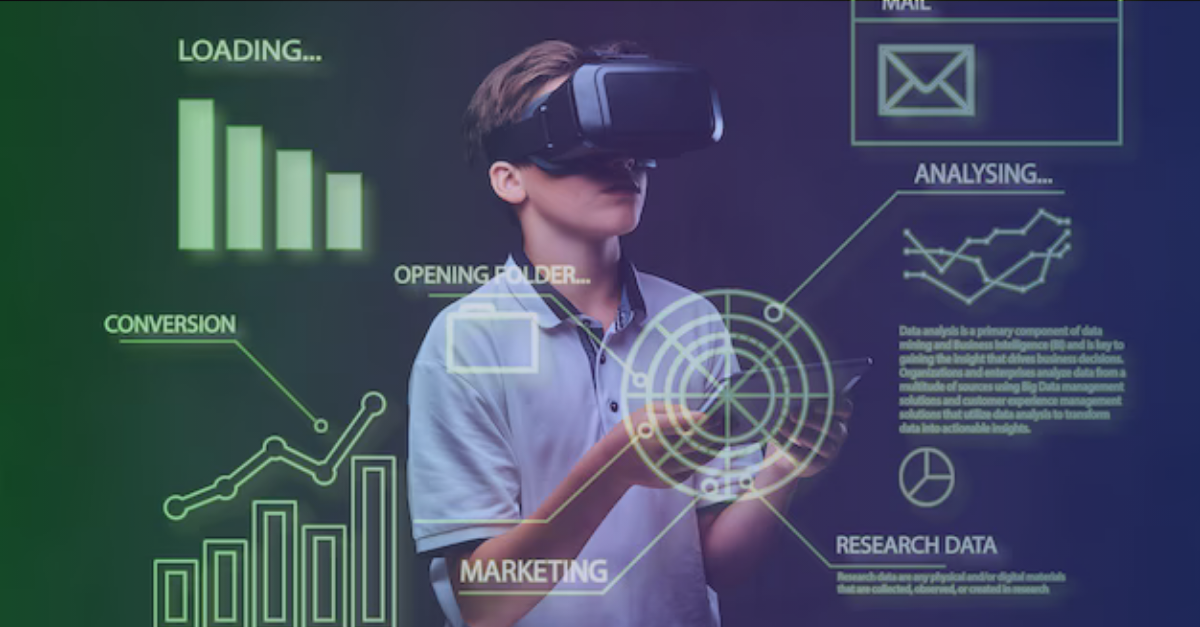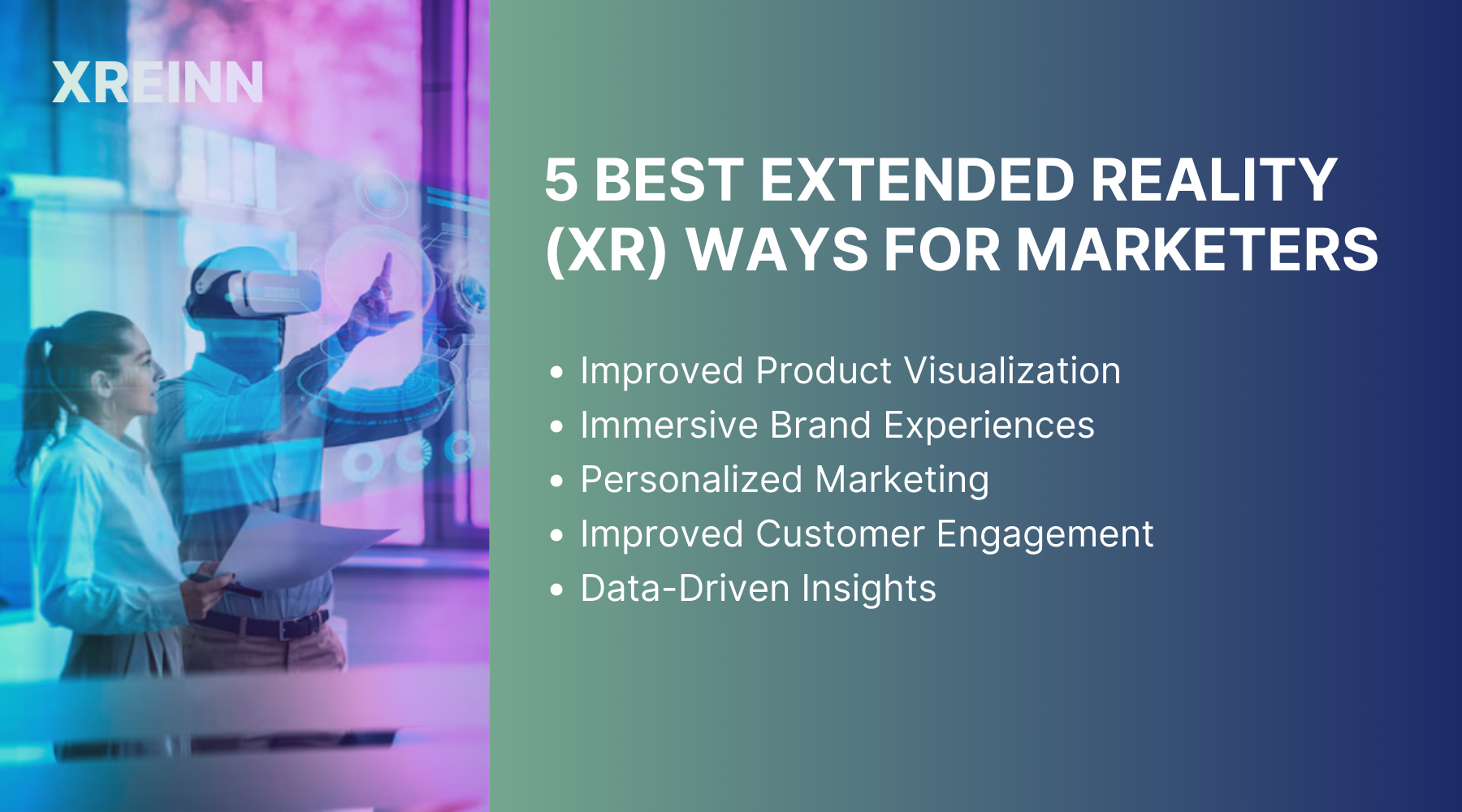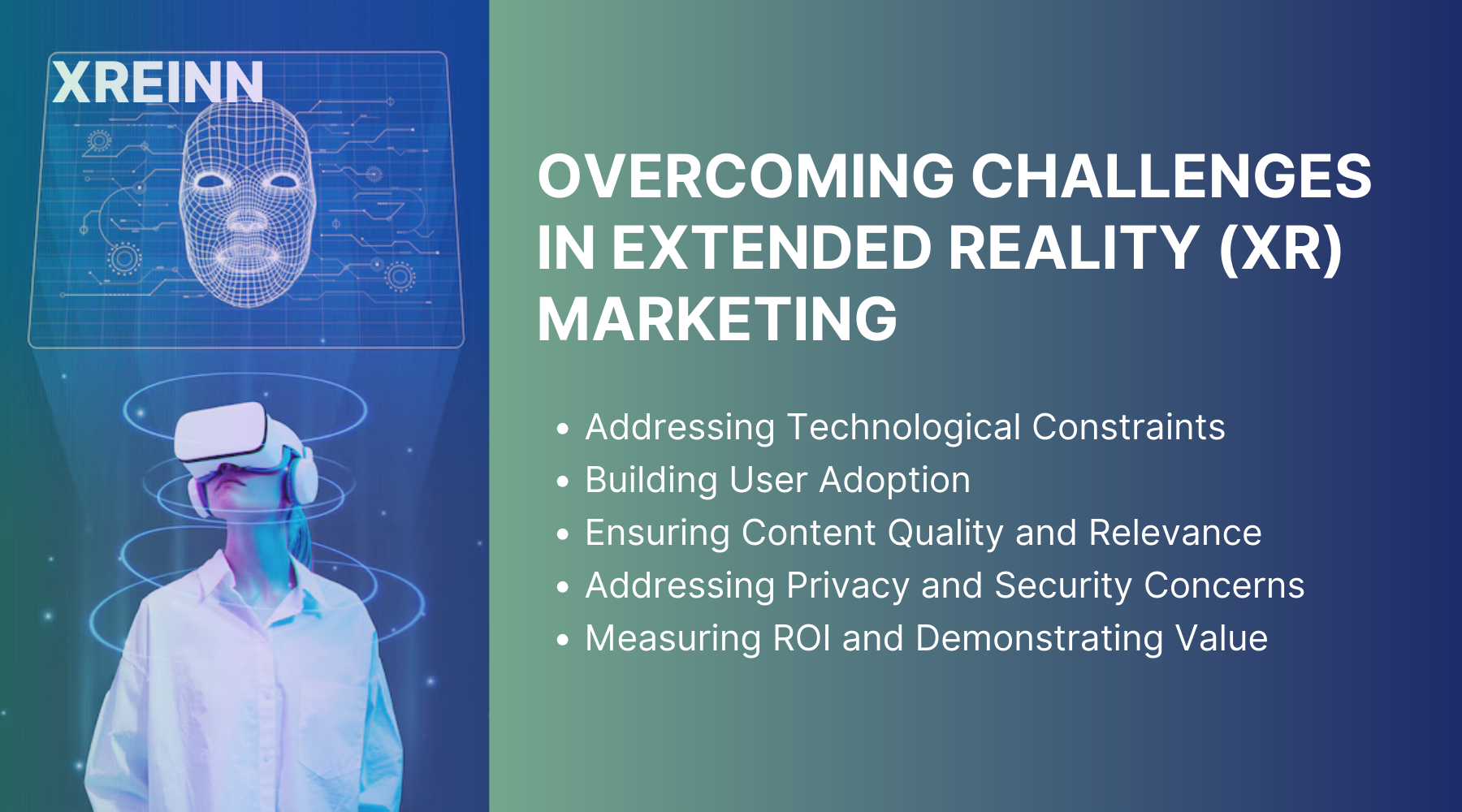Social Listening
5 Powerful Ways Extended Reality (XR) is Changing the Game for Marketers
Jul 21, 2024
Extended Reality (XR) is changing various industries, including marketing. By seamlessly merging the physical and virtual worlds, XR provides marketers with innovative tools to create engaging and memorable experiences. These tools include VR headsets, AR applications, and mixed-reality devices, which allow for engaging product demonstrations and interactive advertisements.
From improving product visualization to delivering personalized marketing campaigns, XR is reshaping the marketing field by offering powerful strategies that go beyond mere trends.
Furthermore, brands can now engage customers in previously unimaginable ways, building deeper connections and driving higher levels of customer satisfaction and loyalty.
What is Extended Reality?
Extended Reality (XR) is an umbrella term that encompasses various immersive technologies that merge the physical and virtual worlds. It includes Virtual Reality (VR), Augmented Reality (AR), and Mixed Reality (MR). These technologies create new environments and visualizations where physical and digital objects coexist and interact in real time.
5 Best Extended Reality (XR) Ways for Marketers

Here are 5 best ways where XR is changing the game for marketers:
Improved Product Visualization
Extended Reality (XR), particularly Augmented Reality (AR), has changed product visualization, allowing consumers to see and interact with products in their real-world environment through their smartphones or
This technology enables potential buyers to place virtual furniture in their living rooms, test how a new car might look in their garage, or even see how a piece of artwork would fit on their wall. Such engaging experiences help customers make more informed purchasing decisions, leading to higher satisfaction and reduced return rates.
Additionally, virtual try-on features for clothing, accessories, or makeup enable customers to see how products look on them before making a purchase, significantly improving the online shopping experience.
Immersive Brand Experiences
Virtual Reality (VR) takes brand storytelling to a whole new level by creating fully engaging experiences that deeply engage consumers. Brands can craft virtual environments where users can explore, interact, and compellingly experience the brand's story.
For instance, automotive companies can offer virtual test drives, while travel brands can provide virtual tours of captivating destinations.
Furthermore, interactive virtual events and launch parties in VR allow brands to engage with a global audience, offering real-time interactions and a sense of presence that traditional digital marketing methods can't match. These engaging brand experiences leave a lasting impression, building a deeper emotional connection with the audience.
Personalized Marketing
AR advertising brings a new dimension to personalized marketing by providing interactive and customizable experiences that address individual user preferences. Instead of static ads, AR ads can engage users in interactive content customized to their interests and behavior, increasing engagement and conversion rates.
Mixed Reality (MR) takes this a step further by adapting the marketing content to the user's physical environment, creating unique and personalized interactions. This level of customization makes the marketing message more relevant and impactful, improving the overall user experience and driving brand loyalty.
Improved Customer Engagement
XR technologies have introduced gamification into marketing strategies, transforming traditional campaigns into interactive and engaging experiences. Brands can create AR or VR games that involve their products, encouraging customers to participate and engage with the brand in a fun and memorable way.
For example, scavenger hunts using AR can lead customers to physical locations or products, driving both online and offline engagement. Virtual tours powered by VR are particularly beneficial for industries like real estate and tourism, where potential customers can explore properties or travel destinations in a detailed and immersive manner, significantly enhancing customer engagement and interest.
Data-Driven Insights
One of the significant advantages of XR in marketing is the ability to collect detailed data on user interactions and behaviors in real-time. XR technologies can track how users interact with virtual objects, how long they engage with certain experiences, and what aspects they find most appealing.
This rich dataset provides marketers with valuable insights into consumer preferences and engagement patterns. Improving analytics derived from XR interactions enables brands to refine their marketing strategies, optimize campaign performance, and deliver more targeted and effective marketing messages. By using these data-driven insights, marketers can continuously improve their campaigns to better meet the needs and preferences of their audience
Pros and Cons of Extended Reality in Marketing
Pros of Extended Reality (XR) in Marketing
Improve Customer Engagement:
XR creates immersive experiences that capture customers' attention and keep them engaged for longer periods. This can lead to stronger emotional connections with the brand.
Improved Product Visualization:
XR allows customers to visualize products in their environment, such as placing virtual furniture in their living room or trying on virtual clothing. This helps customers make more informed purchasing decisions.
Innovative Brand Storytelling:
Brands can use XR to create compelling and interactive stories that immerse consumers in the brand's narrative, making the experience more memorable and impactful.
Personalized Marketing:
XR enables highly personalized marketing campaigns by adapting content to individual user preferences and behaviors, increasing the relevance and effectiveness of the marketing efforts.
Competitive Advantage:
Early adopters of XR can differentiate themselves from competitors by offering unique and innovative experiences that attract and retain customers.
Cons of Extended Reality (XR) in Marketing
High Development Costs:
Creating XR experiences requires significant investment in technology, software development, and content creation, which can be expensive for many businesses.
Technical Challenges:
Developing and deploying XR applications involves complex technical challenges, including ensuring compatibility across different devices and platforms, as well as maintaining high performance and user experience.
Limited Accessibility:
Not all consumers have access to XR devices such as VR headsets or AR-compatible smartphones, which can limit the reach and impact of XR marketing campaigns.
Learning Curve:
Both marketers and consumers may face a learning curve when adopting XR technologies. Marketers need to understand how to create effective XR content, while consumers need to become comfortable using XR applications.
Potential for Overload:
If not implemented thoughtfully, XR experiences can become overwhelming for users, leading to a negative impact on brand perception and customer satisfaction.
Overcoming Challenges in XR Marketing

Extended Reality (XR) in marketing presents several challenges that require strategic solutions to ensure successful integration and widespread adoption.
Addressing Technological Constraints
Technological limitations such as device compatibility, hardware requirements, and software integration present significant challenges in XR marketing. Marketers must manage these constraints by adopting agile development practices that facilitate quick adjustments to evolving technologies.
Strategic partnerships with XR developers and technology providers enable access to innovative solutions and ensure compatibility across diverse platforms and devices.
Building User Adoption
Achieving widespread user adoption of XR experiences remains a critical challenge. Educating consumers about the benefits and functionalities of XR technologies is essential for overcoming resistance and increasing engagement. Implementing user-friendly interfaces, providing interactive tutorials, and conducting immersive demonstrations can help clarify XR and improve user comfort and acceptance.
Ensuring Content Quality and Relevance
Maintaining high-quality and relevant XR content presents ongoing challenges. Marketers need to continually update and optimize content to align with evolving consumer preferences and technological advancements. This includes creating compelling narratives, engaging environments, and interactive features that resonate with target audiences and drive meaningful engagement.
Addressing Privacy and Security Concerns
Privacy and security considerations are important in XR marketing due to the collection and processing of sensitive user data. Marketers must implement strong data protection measures, comply with regulatory requirements, and prioritize transparency in data handling practices. Building trust through clear privacy policies and secure data storage solutions is crucial for building long-term consumer confidence and loyalty.
Measuring ROI and Demonstrating Value
Quantifying the return on investment (ROI) and demonstrating the tangible value of XR initiatives can be challenging. Establishing clear KPIs, tracking engagement metrics such as interaction depth, dwell time, and conversion rates, and utilizing advanced analytics tools are essential for measuring success. Communicating ROI effectively to stakeholders and aligning XR strategies with business objectives are key to securing continued investment and support.
Future of Extended Reality (XR)
The future of Extended Reality (XR) marketing will transform consumer engagement with key advancements. Spatial computing will integrate digital content into physical spaces, enabling immersive AR campaigns. 5G networks will improve XR with real-time HD streaming and multiplayer experiences.
Personalization will be a key feature of XR content, adjusting experiences based on user behavior and surroundings. AR glasses and other wearable tech will make XR more accessible and open new marketing opportunities. Sensory feedback will make experiences feel more real, while real-time data will keep content relevant. These advancements will change how brands and consumers interact, making experiences more engaging and personalized.
Conclusion
Extended Reality (XR) is redefining digital marketing, offering unparalleled opportunities for brands to engage, educate, and inspire consumers through immersive experiences. By strategically integrating XR technologies into marketing strategies, brands can differentiate themselves, drive meaningful interactions, and build lasting customer relationships.

Data Analytics
Jun 27, 2024Master key concepts in data analytics with practical tips to enhance decision-making and achieve success in your projects and professional growth

Data Analytics
Jul 01, 2024Learn the essential stages of the data analytics workflow to turn your data into valuable business insights and drive growth.

